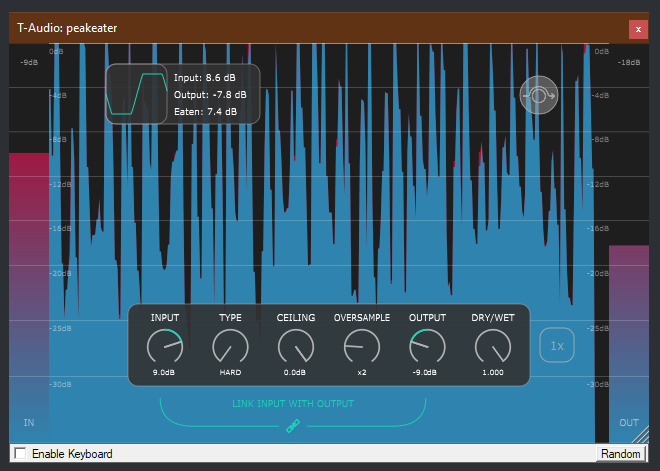How many do you use for a jungle track/ song and how do you do your variations?
Thanks in advance
How many do you use for a jungle track/ song and how do you do your variations?
Thanks in advance
Some tracks up to 5 different breaks or more, some barely use a single break. It really depends on the vibe you’re going for and what you’re trying to accomplish. The best way to understand different use-case scenarios is by paying attention to the music of other artists that you like and that are making this type of music.
I usually work in layers of 2 breakbeats, no less, but use more depending on track complexity. I group them all into the same bus, then put a parallel compressor to glue everything together.
The basic setup would be:
Top layer = The breakbeat containing the main kick and snares, the one that will drive the groove. Triggers the bus compressor (usually kick and snare only, the peaks).
Bottom layer = Hi-hats, cymbals, rides, rimshots, etc… The more metallic and high frequency stuff. Usually for fills, rolls, etc. I don’t let these trigger the bus compressor, so I clip the signal at the end of the chain to get rid of some peaks (right before the bus).
Please note that I usually filter some of the low frequencies in the breakbeat channel, because I like to use my own synthesized kicks in a separate channel/track.
Structure looks like this:
breakbeat 1 + breakbeat 2 + breakbeat etc => breakbeat bus
kick (short) + kick (sub/long) => kick bus
kick bus + breakbeat bus => drum bus
In short, it’s a “main” break, with more low and mid content (kick and snare), and a “secondary” break with more high frequencies, like hi-hats and cymbals.
(ps: the “GLUE COMP” device in the screenshot above is actually a TrackComp with Dry/Wet at 60% and Ratio 2:1 by default, which I just tune for each case).
Thanks to you both.
Which breaks fits togheter?
There’s no simple answer : P
That’s up to you entirely. A matter of trial and error!
Too many.
As many as needed and at least one.
Hey friend! Quick question re this: how do you make it so your high freq hi-hats, etc. do not trigger the bus compressor?
Usually by clipping the track or group where the hihats are located.
Hihats tend to have inaudible clicks in the transient phase that can clutter the mix and make compressors go crazy. These can usually be clipped out without any audible distortion.
You lose a bit of dynamics by doing this (crest factor is reduced), but at least there’s more room for the snare and kick work the compressor’s rhythm, for instance.
I highly recommend trying Peakeater for this. It’s free and open source!
The way to go is linking the input and output levels (the chain button) and start increasing the input until you hear distortion, then back off a few dB. This way you get almost the same loudness as before, except with more “consistent” peaks.
Example: the SM101_brk_back II soul_102bpm break from the Renoise factory samples. Imagine you’re trying to layer it with another heavier break (let’s call it main break).
You put a high pass filter to take out the lows and leave mostly the high end.

The resulting waveform:
You can see some of the peaks are louder than others. These peaks can be clipped to reduce dynamics and make it easier to blend with the main, heavier breakbeat.

I managed to clip this break for 9 dB (2x oversampling) without hearing any distortion (I’m currently at the office with crappy headphones so not a scientific test ahahahha), and barely changing loudness. I could go further and clip twice as much, but that would hurt the dynamics even more. It’s sort of an artistic decision ![]()
The resulting waveform:
If you wanna hear how these sound, check this:
C4 - original break
C#4 - hipassed
D4 - hipassed and clipped
SM101_brk_back II soul_102bpm.xrni (6.1 MB)
Now you have fairly consistent peaks to blend with another break - and have only the kicks and snares of the other break trigger the bus compressor.
PS: Some people (especially older engineers) hate hard clipping because of how it affects the original dynamics, even if it’s transparent. Use with care hahaha. For breakcore and other genres that GO LOUD, though, it’s one of the best strategies to tame your compressors.
Thanks (as always) - genuinely appreciate the thorough answers. This is actually quite a good explanation of how to use a clipper, something I’ve not always “got” in the past!
Just to follow-up: So, essentially you’ve helped ensure your high freq stuff/hats/etc. are not going to have crazy peaks using the clipper. And then you’re layering that over a main break where the kicks/snares are likely going to be the louder elements, thus triggering the compressor. I get that right?
Exactly! That’s the idea.
Can also use sidechaining to duck the secondary break. Lots of different approaches, but the clipper one is my favorite.
I usually use about 3-5 breaks on some tracks
On one track I’ve done I’ve had about 8-9 breaks layered and mixed with each other alongside with percussion (ch/oh/snr)
It’s been tricky to mix them, but I’ve typically processed them with low cuts, distortion, cabinet sim, exciters, compressors, sometimes multiple distortion devices depending on the break(s) used.
It’s all on the matter of personal preference and how committed you are to mixing down so that everything is cohesive.
Which match perfect together?